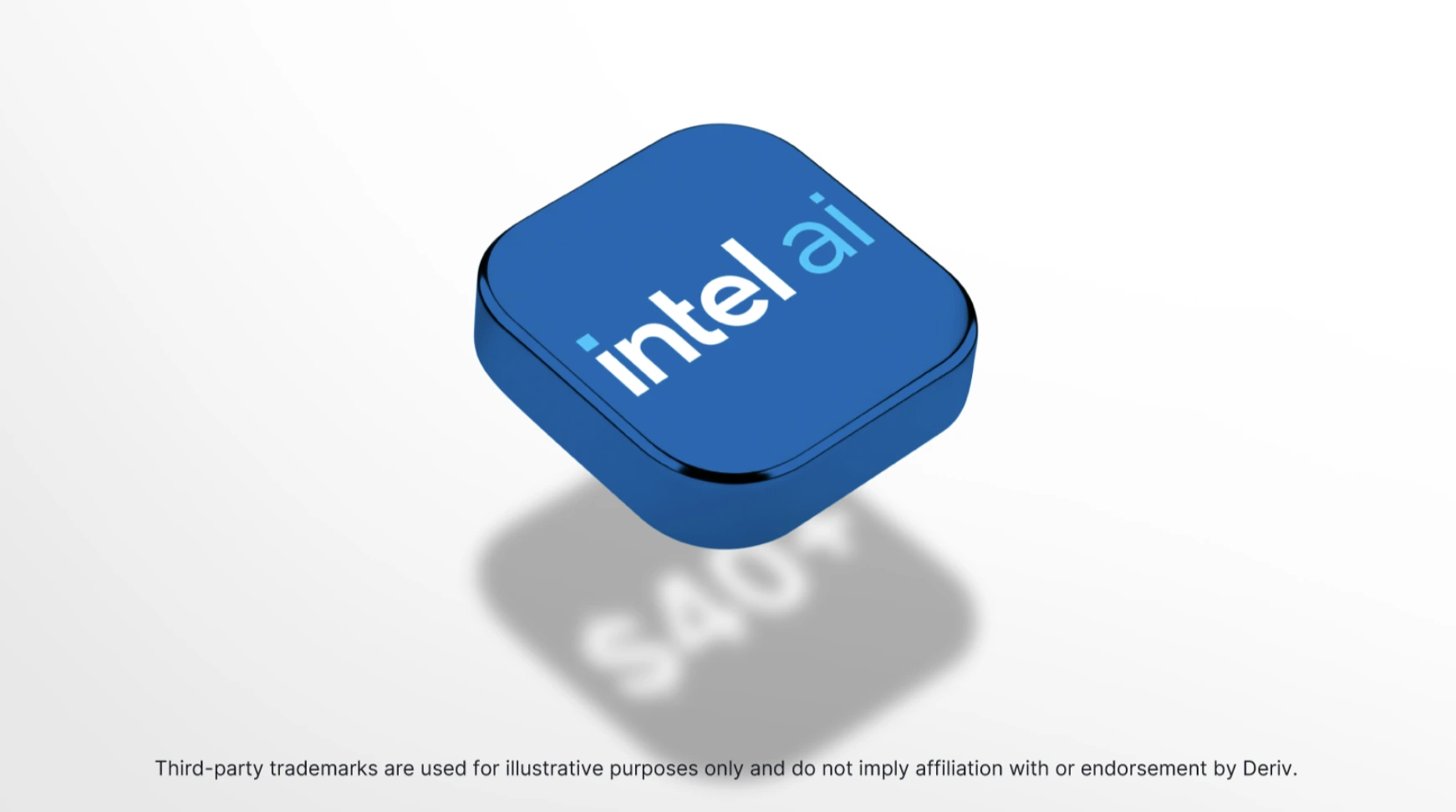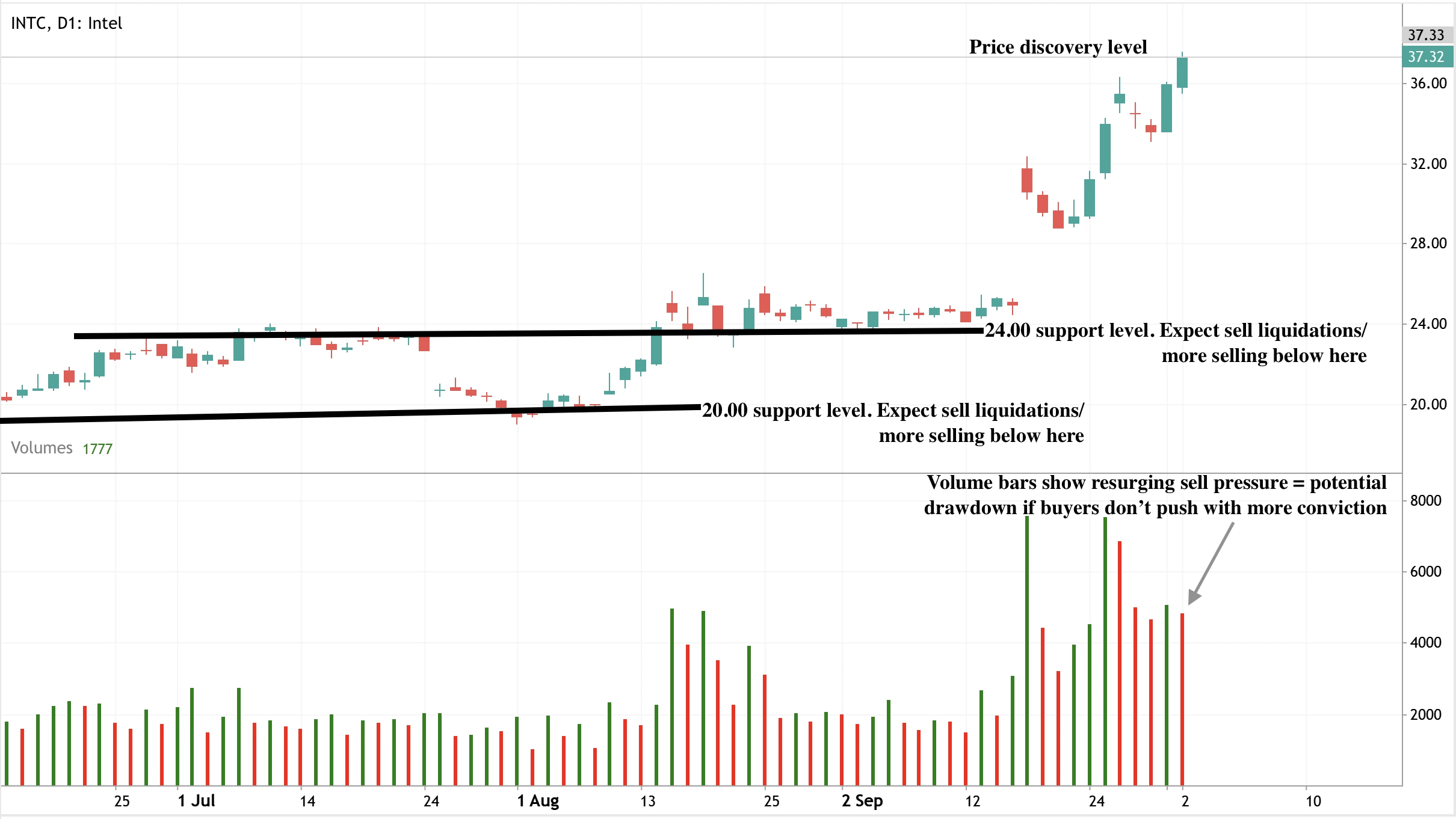Intel stock surges 55%: Can political backing fuel a breakout above $40?
Intel stock surges 55%: Can political backing fuel a breakout above $40?
Intel stock surges 55%: Can political backing fuel a breakout above $40?

Intel’s rally shows strong momentum, but whether it can convincingly move beyond $40 will depend more on performance than politics. The advance to $37 - a 55% rebound in six weeks - has been supported by U.S. government investment, billions in new backing from Nvidia and SoftBank, and speculation about fresh partnerships such as talks with AMD. These forces make another test of $40 likely in the short term. Still, unless Intel can close the technological gap with AMD and TSMC or turn its foundry into a profitable unit, the current surge may face resistance.
Key takeaways
- Intel stock has risen 55% since early September, marking its strongest rally in a year and a half, closing at $37.30 on Thursday.
- President Trump’s investment six weeks ago is up 80%, while the U.S. government’s 10% stake has jumped from $8.9 billion to $16 billion.
- Nvidia’s $5B investment, SoftBank’s stake, and Apple’s reported interest have strengthened market confidence.
- Talks with AMD could see Intel manufacturing chips for its longtime rival - a significant industry shift.
- Leadership reset under CEO Lip Bu-Tan followed Intel’s worst year on record in 2024 (-60%) and widespread layoffs.
- Analysts remain split: Citi maintains a “sell” rating, pointing to foundry losses and competitive disadvantages.
Intel government investment boosts confidence
Intel’s stock recovery is closely tied to political and industrial support. In August, the Trump administration secured a 10% equity stake, buying 433.3 million shares at $20.47 each for $8.9 billion. With shares now at $37, that position is valued at nearly $16 billion.
The US government equity purchase was funded through CHIPS and Science Act grants originally allocated under Biden, underscoring bipartisan recognition of semiconductors as a strategic asset. Intel has already received $2.2 billion from CHIPS grants, with another $5.7 billion due, plus $3.2 billion from a separate program.
For Washington, Intel’s rebound is not only about profits - it’s about reshoring chip production and reducing reliance on Taiwan’s TSMC as U.S. - China tensions deepen. This political backing provides Intel with a buffer that few firms enjoy.
Intel-Nvidia deal and other private-sector endorsements add fuel
Institutional endorsements have been another catalyst:
- Nvidia’s $5B investment in September ties Intel CPUs with Nvidia GPUs in new data centre and PC projects, giving Intel fresh relevance in AI infrastructure.
- SoftBank’s earlier equity stake helped diversify Intel’s investor base.
- Apple is rumoured to be exploring partnerships, stoking further optimism around Intel’s manufacturing capacity.
These deals have restored confidence in a company that only last year was viewed as falling irreversibly behind. However, critics argue Nvidia’s stake is relatively small compared with its resources and does not solve Intel’s lagging performance in processors and AI chips.
Intel-AMD partnership: Potential impact
Reports of Intel and AMD holding preliminary discussions about a foundry deal have sparked one of the most compelling storylines in semiconductors this year.
Such a partnership would be extraordinary: two historic rivals working together. For Intel, it would validate its foundry model and help bring in critical scale. For AMD, it would reduce overreliance on TSMC at a time of geopolitical risk in Taiwan.
That said, talks are early. Questions remain on how much AMD production might shift to Intel and whether AMD could provide direct financial backing. For now, the headlines act more as a sentiment driver than a guaranteed revenue shift.
A leadership reset after Intel’s worst year
The rally also reflects a leadership reset. After a 60% stock plunge in 2024 - the steepest in company history - Pat Gelsinger stepped down. Lip Bu-Tan, who took over as CEO in December, has been tasked with reshaping Intel’s strategy and restoring investor trust.
The company has undergone layoffs, restructuring, and asset reviews. These measures, along with government and institutional backing, have opened the door to a potential rebound, but execution risk remains high.
Sceptics highlight ongoing risks
Not everyone is convinced Intel’s recovery is sustainable:
- Citi analyst Christopher Danely downgraded the stock to “sell,” dismissing Nvidia’s $5B investment as too small to shift Intel’s position.
- Intel is still behind AMD in CPUs and trailing Nvidia in AI processors.
- The foundry business continues to lose money, raising questions about whether Intel should exit altogether.
This bearish perspective emphasises that Intel’s rally is currently built more on political will and investor enthusiasm than clear evidence of renewed competitiveness.
Market impact and price scenarios
In the near term, Intel could push through $40.00 as momentum remains strong. But sustaining levels above $40 will hinge on Intel proving it can deliver in three key areas:
- Stronger performance in AI and data centres.
- Converting political and institutional support into profitability.
- Narrowing the technology gap with AMD and TSMC.
If not, the rally could stall or unwind.
Intel stock technical insights
At present, the daily chart reflects a bullish bias, with price action hinting at further upside potential. Still, volume patterns show a return of selling pressure, suggesting the rally may face limits. Should sellers take control, the stock could retreat toward $24.00 support, with a deeper floor near $20.00.

Traders can track these levels on Deriv MT5, which provides charting and technical tools for momentum-driven equities like Intel.
Trading Intel’s momentum on Deriv platforms
For active traders, Intel’s heightened volatility presents multiple opportunities across Deriv platforms:
- Deriv MT5 CFDs: Trade Intel as a Contract for Difference (CFD) with leverage, which allows you to amplify exposure without owning the underlying stock. Traders can take long positions if the price breaks above current levels, or short positions if the rally stalls and reverses from that zone. Using tight stop-loss orders helps manage downside risk during rapid swings, while take-profit orders can secure gains when targets are hit.
- Risk management: Intel’s rally has been politically charged, which makes price spikes and volatility gaps more likely. Traders should apply disciplined money management techniques, such as limiting risk per trade to a set percentage of equity. Using Deriv’s trading calculators helps determine optimal position sizing, margin requirements, and risk-reward ratios, ensuring strategies align with individual tolerance and account size.
Investment implications
Intel is currently a momentum-driven turnaround play. Backed by Washington and major investors, a breakout above $40.00 is possible, especially if AMD talks progress.
However, longer-term risks remain. Unless Intel proves its competitiveness in AI and chip manufacturing, the rally could fade. For traders, this makes Intel a high-risk, high-reward stock: attractive for short-term moves, but reliant on execution for sustained gains.
Related reading: explore our recent analysis on Gold’s breakout potential and Oil market volatility for more insights into trading commodities and tech-driven momentum plays.
The performance figures quoted are not a guarantee of future performance.















